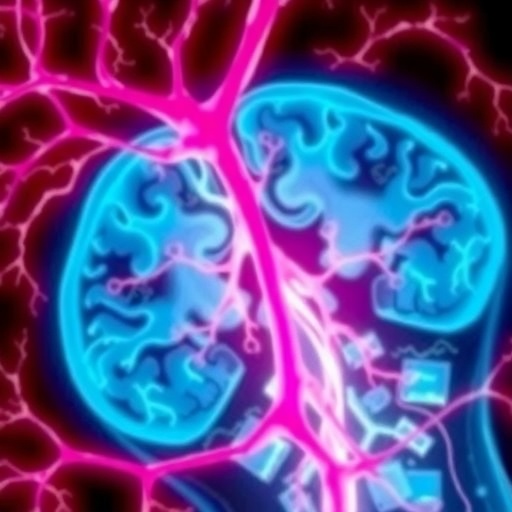First-ever study in people describes ‘stop signal neurons’ in patients with Parkinson’s disease

Credit: Cedars-Sinai
LOS ANGELES (Feb. 3, 2021) — For the first time in humans, investigators at Cedars-Sinai have identified the neurons responsible for canceling planned behaviors or actions–a highly adaptive skill that when lost, can lead to unwanted movements.
Known as “stop signal neurons,” these neurons are critical in powering someone to stop or abort an action they have already put in process.
“We have all had the experience of sitting at a traffic stop and starting to press the gas pedal but then realizing that the light is still red and quickly pressing the brake again,” said Ueli Rutishauser, PhD, professor of Neurosurgery, Neurology and Biomedical Sciences at Cedars-Sinai and senior author of the study published online in the peer-reviewed journal Neuron. “This first-in-human study of its kind identifies the underlying brain process for stopping actions, which remains poorly understood.”
The findings, Rutishauser said, reveals that such neurons exist in an area of the brain called the subthalamic nucleus, which is a routine target for treating Parkinson’s disease with deep brain stimulation.
Patients with Parkinson’s disease, a motor system disorder affecting nearly 1 million people in the U.S., suffer simultaneously from both the inability to move and the inability to control excessive movements. This paradoxical mix of symptoms has long been attributed to disordered function in regions of the brain that regulate the initiation and halting of movements. How this process occurs and what regions of the brain are responsible have remained elusive to define despite years of intensive research.
Now, a clearer understanding has emerged.
Jim Gnadt, PhD, program director for the NIH Brain Research through Advancing Innovative Technologies® (BRAIN) Initiative, which funded this project, explained that this study helps us understand how the human brain is wired to accomplish rapid movements.
“It is equally important for motor systems designed for quick, fast movements to have a ‘stop control’ available at a moment’s notice–like a cognitive change in plan–and also to keep the body still as one begins to think about moving but has yet to do so.”
To make their discovery, the Cedars-Sinai research team studied patients with Parkinson’s disease who were undergoing brain surgery to implant a deep brain stimulator–a relatively common procedure to treat the condition. Electrodes were lowered into the basal ganglia, the part of the brain responsible for motor control, to precisely target the device while the patients were awake.
The researchers discovered that neurons in one part of the basal ganglia region–the subthalamic nucleus–indicated the need to “stop” an already initiated action. These neurons responded very quickly after the appearance of the stop signal.
“This discovery provides the ability to more accurately target deep brain stimulation electrodes, and in return, target motor function and avoid stop signal neurons,” said Adam Mamelak, MD, professor of Neurosurgery and co-first author of the study.
Mamelak notes that many patients with Parkinson’s disease have issues with impulsiveness and the inability to stop inappropriate actions. As a next step, Mamelak and the research team will build on this discovery to investigate whether these neurons also play a role in these more cognitive forms of stopping.
“There is strong reason to believe that they do, based on significant literature linking inability to stop to impulsiveness,” said Mamelak. “This discovery will enable investigating whether the neurons we discovered are the common mechanisms that link the two phenomena.”
Clayton Mosher, PhD, co-first author of the study and a project scientist in the Rutishauser lab, says while it has long been hypothesized that such neurons exist in a particular brain area, such neurons had never been observed “in action” in humans.
“Stop neurons responded very quickly following the onset of the stop cue on the screen, a key requirement to be able to suppress an impending action,” said Mosher. “Our result is the first single-neuron demonstration in humans of signals that are likely carried by this particular pathway.”
###
Funding: Research reported in this publication was supported by the NIH Brain Research through Advancing Innovative Technologies® (BRAIN) Initiative Awards U01NS098961 and U01NS103792.
DOI: Distinct roles of dorsal and ventral subthalamic neurons in action selection and cancellation
Read more on the Cedars-Sinai Blog: Parkinson’s Disease May Begin Before Birth
Contact the Media
Media Contact
Cara Martinez
[email protected]
Original Source
https:/




